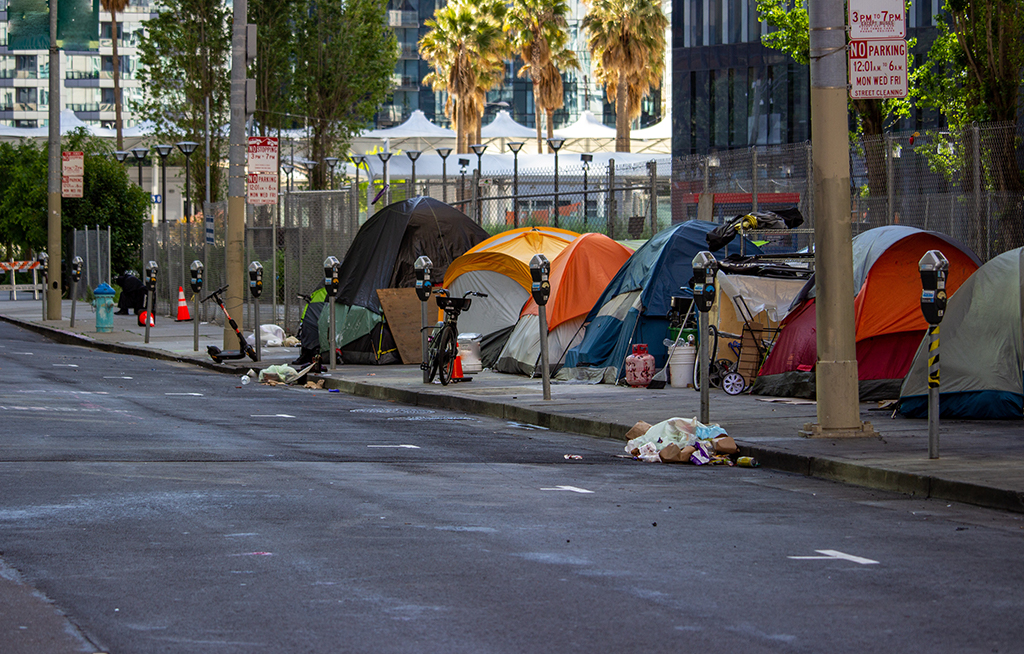To clarify questions of what inequality is, why it is a problem, and what ought to be done about it, we asked professional philosophers to kick off the review by addressing the question of what is wrong with inequality.
A panellist’s introduction, by Angus Deaton
Together with empirical evidence, we wanted to hear about the values that are at stake in thinking about inequality, and the reasons that they are important. Hence this chapter on “What’s wrong with inequality” by Debra Satz of Stanford and Stuart White of Oxford, together with shorter commentaries by Eric Posner of the University of Chicago and Philippe van Parijs of the University of Louvain.
Many of the members of the Deaton Review panel are economists, and we have been concerned from the beginning to cast our net wider. Many people, economists and non-economists alike, are concerned about inequality, and worried that there is too much of it, though others feel that we worry about it too much. To clarify questions of what inequality is, why it is a problem, and what ought to be done about it, we asked two professional philosophers, Satz and White, to kick off the review by addressing the question of what’s wrong with inequality. Their chapter and the commentaries are posted with this introductory note.
We are simultaneously posting the results of the Review’s work on what we have learned from asking people what they think about inequality. There are fascinating contrasts here, with ideas that philosophers have dismissed held strongly by many, despite their flaws. And there is the intriguing, and possibly very consequential, finding that when people espouse different philosophies or politics they also tend to disagree over facts.
Philosophy can sometimes seem abstract, but as these chapters show, ideas about equality and other values can get practical very quickly. There is a long tradition in Britain of philosophical ideas influencing public policy. One famous case is Hugh Dalton, Chancellor of the Exchequer from 1945 to 1947, who published a paper in the Economic Journal in 1920 which tied the measurement of inequality to economic welfare, an idea that was later developed by Tony Atkinson in 1970, and by Amartya Sen in 1973. James Mirrlees used similar ideas in 1971 to solve a version of the classic problem of how to reconcile a philosophical desire for inequality in a world where incentives matter, and place limits on taxation and redistribution.
What’s wrong with inequality?
Satz and White (SW) reject the view that there is nothing wrong with inequality, that as long as everyone has enough, the sufficiency criterion, one person can have no complaint against another simply because the other person has more of something, including income or wealth. Sufficiency is immensely important, everyone agrees, but to many philosophers, is it not all that matters. Yet, as our attitudes surveys reveal, many people hold the view that, while poverty needs to be eliminated, once that is done inequality is of little or no concern.
While many inequalities between people, like height or musical ability, do not seem to be morally concerning, there are many inequalities that do matter. Consider differences in social status, in citizenship – think of slavery, or societies where some workers do not get to vote – in education, in access to the law, in the ability to choose where to live, and in the ability not to be limited by morally irrelevant factors, such as race, ethnicity, gender, or age. These other inequalities are sometimes linked to inequality in income and wealth, but they are not fully subsumed in or captured by them. It is important to get away from thinking of inequality solely as a measure of the dispersion of income and wealth, using some suitable index like the Gini coefficient.
SW explore the idea of “prioritarianism,” that the needs of people for more are more urgent if they have less, and should be given more social weight. The prioritarian ideal is perfect equality, but guaranteeing that everyone gets the same would reduce incentives. Balancing the desire for equality against the need to maintain incentives was the basis for Mirrlees’ famous calculation of the “optimal income tax” which shows how to get the trade-off right. But prioritarianism has its problems; it is unclear why extra income for a millionaire should get priority over extra income for a billionaire.
SW discuss other egalitarian schemes, in particular philosopher John Rawls’ argument for maximizing the wellbeing of the worst off – the maximin criterion – which does not prohibit inequality, but any residual inequality must be justified on the grounds that reducing it further would make the worst off even worse off. In his commentary, Philippe van Parijs argues for this maximin approach in terms of freedom and constructs an argument for a universal basic income on these grounds, an income that would be paid in part in kind, particularly health and education.
Many people argue against equality in terms of outcomes but in favour of equality of opportunities, one of the cornerstones of the defense of meritocracy. These kinds of equality are conceptually very different, but in the real world, where one generation is followed by another, they cannot fully be kept apart. Even the strongest defenders of equality of opportunity must recognize that inequality in outcomes in one generation means inequalities of opportunities in the next: the most heroic public policy efforts are still not going to cancel the lottery of which family one you are born in to, whether your parents had equal opportunities with their peers or not.
Philosophers have thought hard about these issues. One approach is to hold people responsible for their own actions and choices, but to compensate (or tax) them for characteristics, such as disabilities (or talents), that are outside their control. While this may be an idea that some people find appealing, the consensus today is that the distinctions cannot be made in a way that does not give unacceptable judgments in at least some cases. To take a current example, should people who have refused to be vaccinated against COVID-19 be treated in hospital? Most, though perhaps not all, would find this principle harsh. And what about the millions who have refused the vaccine and not been infected? Both sets of people have behaved in the same way, but we treat them vastly differently. In the end, preferences and talents, choices and endowments are inextricably bound together so that it is impossible to base policy on a distinction between them.
SW discuss at some length the important concept of “relational egalitarianism,” by which “we should understand the ideal of `equality’ as fundamentally about the nature and quality of social relations between people rather than about the just distribution of goods.” “Such a society stands in opposition to forms of social organization based on caste or class hierarchies.” The philosopher Elizabeth Anderson is one the most eloquent contemporary proponents of this view. It is extremely useful in today’s divided and polarized societies where some groups are not given full access to the best that society can offer, because they are discriminated against by race or gender, by education level, or by where they live. The idea finds echoes in the pro- and anti-Brexit division, or in the idea that some are being left behind, or in the distinction between those from somewhere and those from nowhere. Relational inequality can, of course, be undermined by income and (particularly) wealth inequalities, for example when a rich aristocracy owns the land, and does not admit others as full citizens, or when voting rights are tied to wealth. Even without such extreme measures, the more advantaged can lock up opportunities for their own children.
Robert Sugden has also provided a commentary, drawing in part on his recent book The Community of Advantage, about what forms of egalitarianism make sense within a market economy such as the United Kingdom. In doing so he finds parallels with Anderson’s notions of democratic or relational inequality.
These are just a sample of the issues that SW deal with; there are many others. One important topic is the instrumental effects of inequality, for example whether society and/or the economy work less well when inequality is high and if so, what to do about it. The commentary by Eric Posner also addresses these issues and is particularly useful on what should be done, and whether limiting inequality directly is the right solution.
Obvious concerns here include whether the political system can deliver a functioning democracy in the presence of great inequalities of wealth, whether the legal system can genuinely be open and fair to all, and whether inequality interferes with the aims of our educational system, creating an aristocracy of merit through wealth as parents use their resources to favor their children. All of these concerns can justify limiting income or wealth inequality. But the appropriate remedies are not always to reduce inequality through taxes and benefits. One example is monopoly or monopsony, where owners of firms use their positions to make profits at the expense of consumers and/or workers. Here the remedy lies in antitrust enforcement which will not only reduce inequality but have other benefits; put more crudely, if people are stealing from others, the remedy is to stop them stealing, not to raise their rates of income tax, though perhaps the income tax is the last resort if the thieves are too powerful to be stopped.
Another important case is where inequality is the consequence of something good that is happening. Modern economies grow through innovation, and it is often argued that innovators require outsize rewards. Certainly, the richest people in the world today are innovators like Bezos, Gates, Zuckerberg, Musk, and Page. It is often argued that the fact that Europe is more equal than the US is not unconnected to Europe’s lack of an Amazon, a Microsoft, a Facebook, a Tesla or a Google. More broadly, when economic growth picks up, the initial distribution of benefits is often vastly unequal. The world as a whole was made immeasurably more unequal by the Industrial Revolution. Yet, even if it were possible, we would not undo the Industrial Revolution, though we should certainly try subsequently to spread the benefits to everyone.
Whether innovation needs inequality – over which there is much disagreement – there is wide agreement on what happens at the next stage. The innovators have to be reined in and prevented from blocking the next wave of innovation which often threatens them. This may be the situation we are in today with Facebook and Google. Incumbent firms have incentives to block future innovation, creating persistent inequality, low growth and excessive lobbying. We need institutions to prevent that happening. The incumbents have no incentive to do it themselves. The same can be said for successful families who can hoard opportunities, as we have seen. That is why we need institutions to promote upward social mobility, restrain monopolies and to ensure that every person is treated fairly. Permitting and then controlling wealth inequality through this process is a major challenge for even the best policymaking.
There is a particular concern here with COVID, where the tech titans have seen a huge increase in their wealth because of the pandemic. Because big tech is listed on the US stock market, and account for a quarter of its value, they have brought gains in wealth to other Americans who are invested in the market. Low interest rates have also inflated asset prices, so that there has been a widening of the gap between those who have assets and those who do not. This is an issue in most rich countries, but not so much in Britain where the stock market is still well below its pre-pandemic high.
We hope that you will read Satz and White’s chapter, as well as the commentaries. They are a splendid introduction to the issues that we are wrestling with in the Review.








